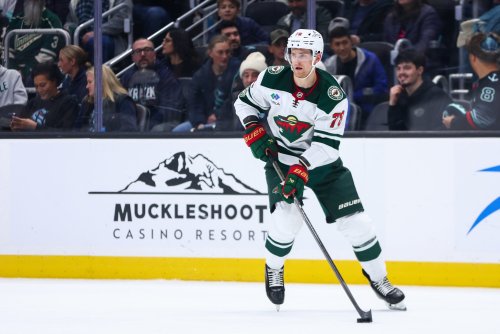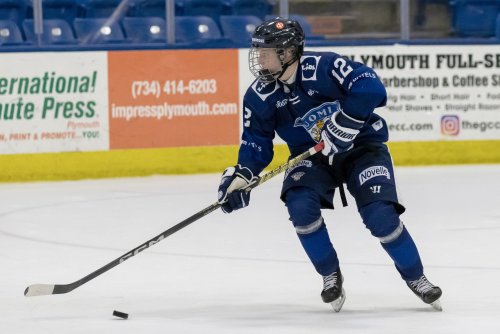
With armchair GM season in full effect and the trade market being a bit more active than speculated prior to the season, now is a great time to dig into some numbers to see if we can provide guidance for NHL GM's as they shape their roster with the trade deadline of March 2 approaching in the distance. But instead of looking at possession stats and points per game, we'll be taking a macro-view of the roster construction of several contending teams across the NHL in the 2015-16 season to see if there is a golden thread that can show us what the good teams are doing and try to calculate a secret formula or build a model for winning points in the NHL.
Research Basis
Personnel Breakdown
This chart represents an age-based review of the rosters, providing overall numbers as well as a positional breakdown of the team's veteran versus youth presence. Goaltenders are not broken down simply because most NHL goalies are 26 and above as it takes longer for those players to develop. The numbers in each column of this graph represent the percentage of the position occupied by youth or veterans.
Take Aways
There isn't a lot of disparity in the average age of players on a contending team, but this number will be important later. Contending teams tend to be a bit more veteran-heavy on the blue line, and forwards seem to break into the league at a younger age on contending teams. This could indicate that like goaltenders, defensemen take a bit longer to fine-tune their skills while forwards have a better chance of carrying forward based on their natural ability and that drafting forwards is more important than developing them.
Salary Breakdown
This chart represents a salary-based view of the rosters, again providing overall numbers by position but also further breaking down the position between veterans and youth. Goaltenders are included in overall numbers, but again are not broken down by age for the reasons mentioned above. The numbers in the columns of this graph represent the percentage of the team's total payroll against the designated category.
Take Aways
There's a bit more to be taken away here, especially when it comes to the total payroll applied to each position on the team. As a basis, there are 360 minutes logged in a regulation game (60 min each times 3 forwards, 2 defense, 1 goalie). Forwards receive half (50%) of the minutes, defense receives one-third (33.3%) of the minutes and the goalie gets one-sixth (16.7%) of the total minutes played. By pure projection of those numbers, it could be expected that the salary disposition of the team would match that. But as you can see here, that isn't the case. Contending teams are spending nearly 10% more than expected on their forward group, a few percent less on their defenders and consistently less on their goalies. So, it appears that in today's NHL, investing in your forward group tends to equate to gaining more points. But this could also infer that forwards are overpaid, defenders are paid fairly and goaltenders are underpaid in the current NHL system.
Overall, contending teams are paying 76% of their payroll to veterans while only 62% of the roster is made up of veterans - which makes sense as veteran players are generally compensated more with experience. However, what doesn't become completely clear in these numbers is that most of these teams have at least one youth forward and one youth defender that are getting a big portion of the youth salary for their team. That indicates that the player has achieved star-status very early in their career, and puts a bright light on the importance of how well a team drafts when equating it to points earned by the team.
Putting It All Together
To further understand what all of this means, we look for correlation between some the numbers presented to try to see what leads to a winning formula. The stronger a number correlates to earning points, the easier it will be to determine a trend, or in essence, reveal a truth about how age and spending drive points in the league.
This graph shows the strongest correlation amongst the numbers reviewed above. The X-axis (horizontal) represents total points earned, the Y-axis (vertical) represents average age of the team and the bubble size indicates the percentage of the team's payroll spent on youth. The thing that absolutely jumps off the page here is that the younger the team is, the more points it earns. As mentioned above, there isn't a lot of disparity amongst the average of contending teams, but even a small shift appears to make a big difference as Washington leads the points at 69 with an average age of 27.2.
Another strong correlation comes from the percentage of the roster occupied by youth to points earned. This graph represents points on the X-axis, % of total roster youth on the Y-axis and average age in the bubble size. This graph seems to contradict the previous, as the correlation here is that the less spots filled on the roster by youth, the more points are earned. However, the outliers of Los Angeles and Washington begin to show hints that there might be a point of convergence that this graph doesn't show because it only includes contenders.
This graph represents Points on the X-axis, % Salary spend on Defense on the Y-axis and % Salary spent on goaltenders in the bubble size. Here, a point of convergence starts to emerge. The average spend on Defense is 30.7%, which is where the line seems to converge most, suggesting that spending above 30.7% leads to less points and spending below 30.7% also leads to fewer points.
The final graph depicts Points on the X, % Veteran D on the Y and % Vet D Salary in the bubble size. This digs a bit deeper into what might appear to be a less meaningful stat, but there is a strong point of convergence correlation to gaining points, and Washington appears to have figured it out. At 62.5% Vet D on the roster, Washington seems to have hit the ideal spot that equates to gaining points. There would have to be a lot more work done to prove causation between the two, this is merely reflecting the correlation in the results.
Conclusion
There are definitely some truths to be unearthed from looking at NHL rosters in this way. It would be interesting to do a more exhaustive review and incorporate each team, but in looking at the contending teams, there do seem to be some secrets to their success. Some of the most interesting things to come out of this view are how teams allocate payroll by position and how that leads to their success. It is also interesting to note which underlying numbers seem to contribute to winning in the NHL and whether a secret formula can be discovered by reading between the lines. There are likely many more truths to be discovered by further investigation of the numbers, so here is a copy of the spreadsheet for you to download and take a look at on your own. Please leave anything you determine in your review in the comments section.
What Should The Wild Do?
Think you could write a story like this? Hockey Wilderness wants you to develop your voice, find an audience, and we'll pay you to do it. Just fill out this form.









Recommended Comments
There are no comments to display.
Join the conversation
You can post now and register later. If you have an account, sign in now to post with your account.
Note: Your post will require moderator approval before it will be visible.